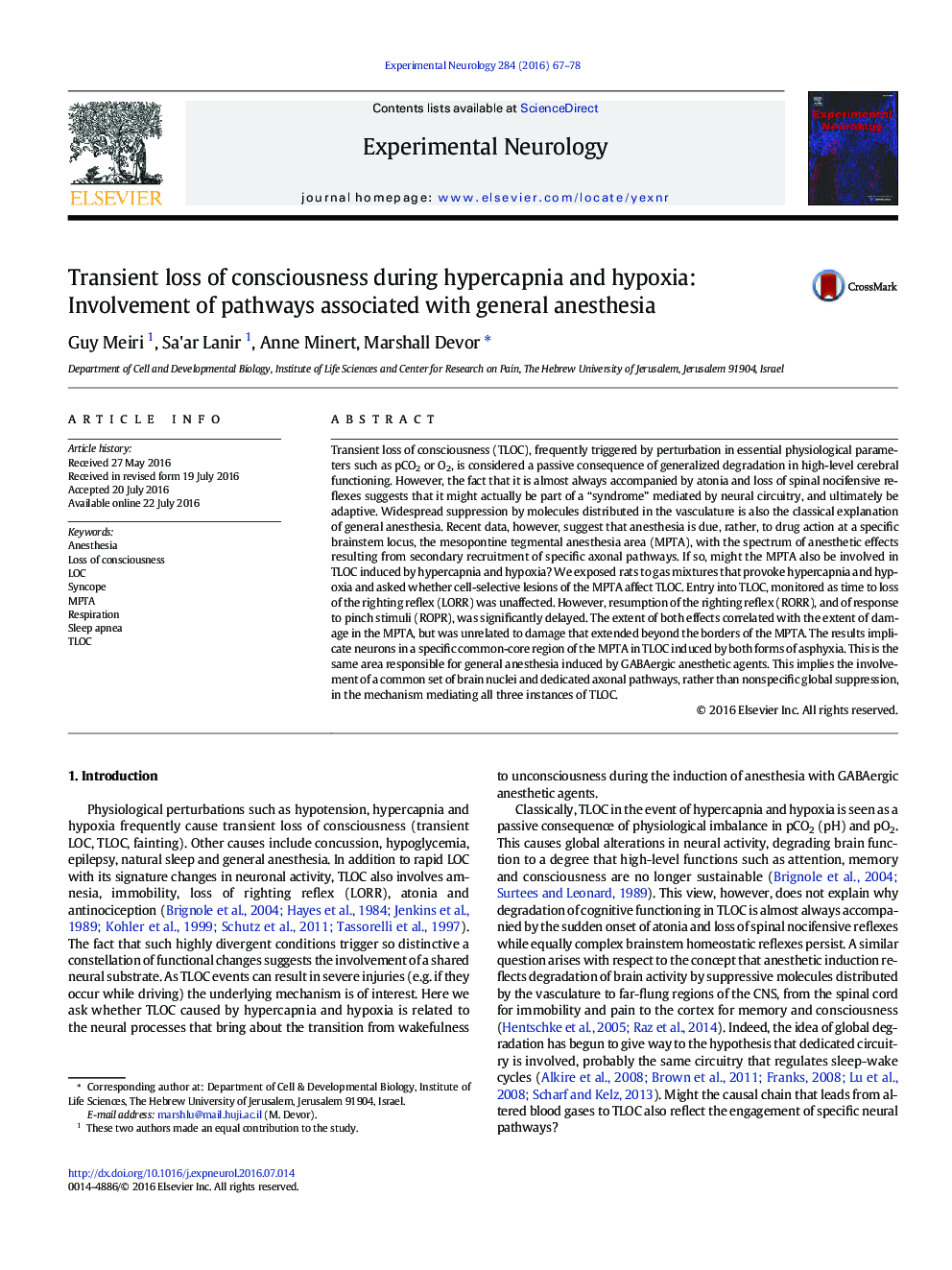| کد مقاله | کد نشریه | سال انتشار | مقاله انگلیسی | نسخه تمام متن |
|---|---|---|---|---|
| 3055326 | 1186469 | 2016 | 12 صفحه PDF | دانلود رایگان |
• MPTA lesions delayed recovery of consciousness following hypercapnia and hypoxia.
• The delay of recovery was proportional to the extent of the MPTA lesion.
• Time to loss of the righting reflex (LORR) was not affected.
• Fainting during asphyxia may involve dedicated circuitry, not global suppression.
• Asphyxia partly shares brain-state transition circuitry with GABAergic anesthesia.
Transient loss of consciousness (TLOC), frequently triggered by perturbation in essential physiological parameters such as pCO2 or O2, is considered a passive consequence of generalized degradation in high-level cerebral functioning. However, the fact that it is almost always accompanied by atonia and loss of spinal nocifensive reflexes suggests that it might actually be part of a “syndrome” mediated by neural circuitry, and ultimately be adaptive. Widespread suppression by molecules distributed in the vasculature is also the classical explanation of general anesthesia. Recent data, however, suggest that anesthesia is due, rather, to drug action at a specific brainstem locus, the mesopontine tegmental anesthesia area (MPTA), with the spectrum of anesthetic effects resulting from secondary recruitment of specific axonal pathways. If so, might the MPTA also be involved in TLOC induced by hypercapnia and hypoxia? We exposed rats to gas mixtures that provoke hypercapnia and hypoxia and asked whether cell-selective lesions of the MPTA affect TLOC. Entry into TLOC, monitored as time to loss of the righting reflex (LORR) was unaffected. However, resumption of the righting reflex (RORR), and of response to pinch stimuli (ROPR), was significantly delayed. The extent of both effects correlated with the extent of damage in the MPTA, but was unrelated to damage that extended beyond the borders of the MPTA. The results implicate neurons in a specific common-core region of the MPTA in TLOC induced by both forms of asphyxia. This is the same area responsible for general anesthesia induced by GABAergic anesthetic agents. This implies the involvement of a common set of brain nuclei and dedicated axonal pathways, rather than nonspecific global suppression, in the mechanism mediating all three instances of TLOC.
Journal: Experimental Neurology - Volume 284, Part A, October 2016, Pages 67–78
